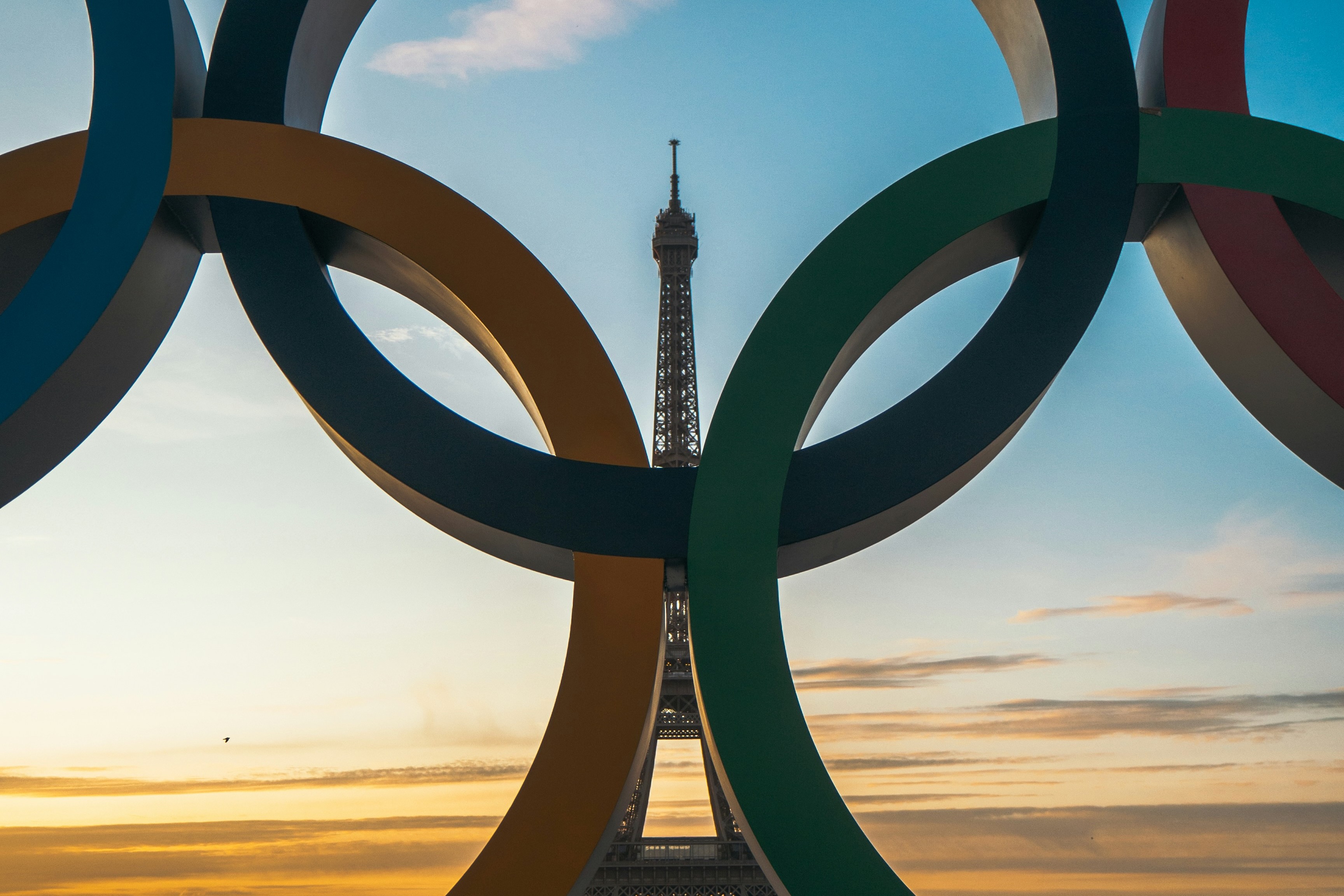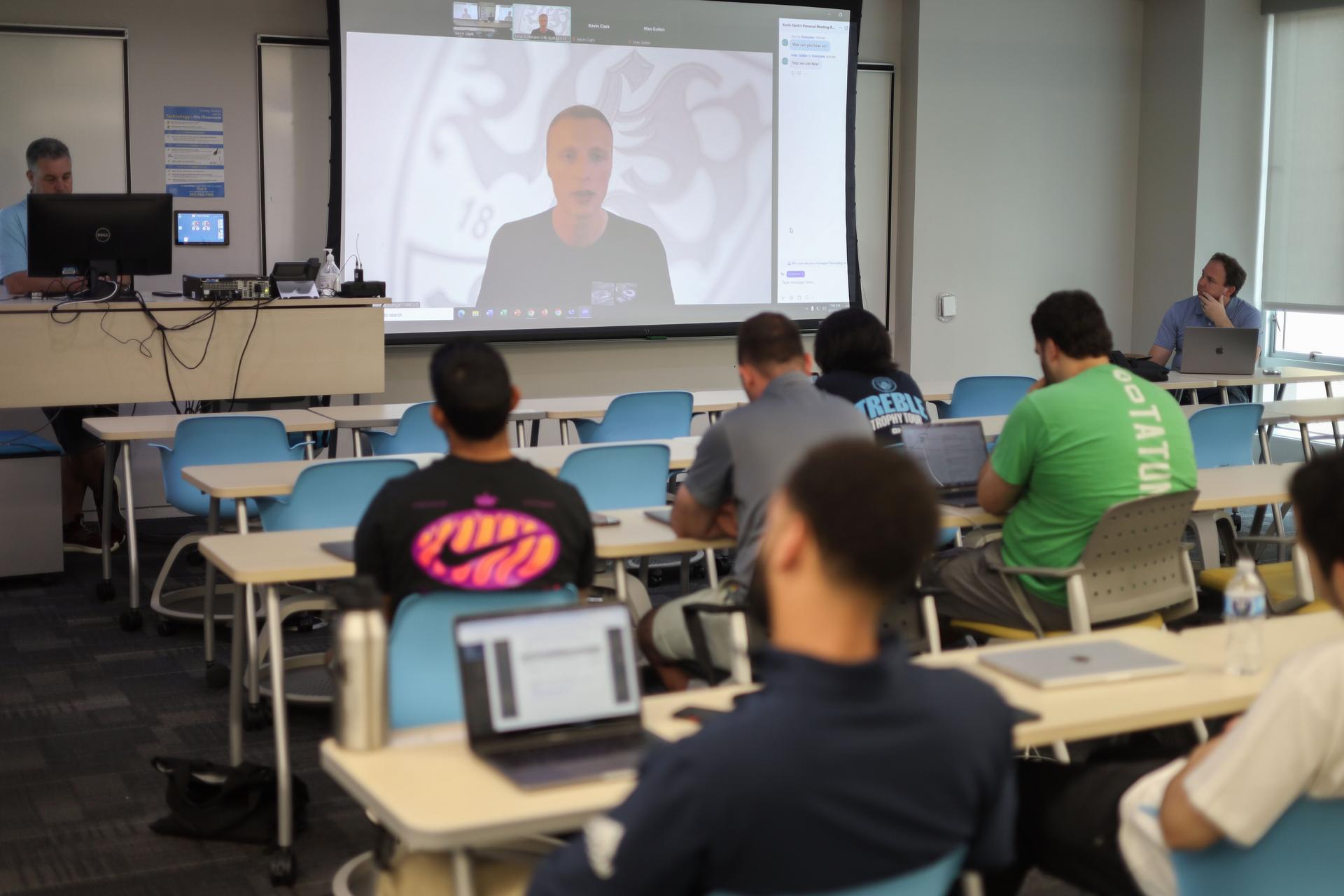The last Olympic Games the United States men’s national soccer team qualified for was 2008, coincidentally the same summer Patrick Mannix, B.S. ’12, enrolled as a first-year student at the George Washington University hoping to one day become a fitness coach for a high-level soccer team—an ambition he shared with classmates during his first course in the exercise science program.
After a 16-year absence, Team USA is taking the pitch at the Games with Mannix on their sideline seeing his ambition turn to fruition.
The GW alumnus is in France as the head of performance for a U.S. men's soccer team making its long-awaited return to the Olympics. Mannix is tasked with overseeing the sport science strategies, strength and conditioning support and nutritional provision for a squad full of many young players he has personally had the opportunity to work with since they were 14 years old. Mannix has been employed nearly nine years as a sports scientist for the national governing body, U.S. Soccer, and specifically for the Men’s Youth National Teams.
While thrilled to be representing the nation—as well as GW—at the Olympics, Mannix will be quite busy across the pond, where the U.S. men’s team kicks off action July 24 against host France in Marseille.
The Olympics soccer tournaments are much more compact than other large international competitions. Instead of lasting a month as the European Championships, Copa America and the World Cup tournaments do, the Olympics competition squeezes up to six games in just two weeks, making nutrition, recovery and performance optimization even more imperative.
“The planning process is so massive in international soccer because, with the fixed constraints that you have, it’s basically an exercise in fatigue management,” Mannix said.
The work started far before the Games. In addition to a two-week prep trip to France in January, Mannix has been in constant communication and collaboration with clubs to maximize everyone’s peak performance level for the Olympics. That’s tricky, as some of the players (most in their young 20s as rosters in the men's tournament are required to be composed of players under 23 years of age, with three permitted exceptions) are in the middle of their professional seasons in the United States, while others who play in Europe are in their second or third week of preseason training.
Whether it’s keeping the rhythm of training for the guys in-season or accelerating the preseason programming for those who aren’t, each player’s training plan all leads to being in game-ready shape for Olympics competition.
“The thing with sports science is that it entails gauging players’ physical status and readiness via workload monitoring, and working closely with the coaching staff to ensure that our planning and periodization, or sequencing of training days is built in an appropriate manner to optimize both player health and performance,” said Mannix, who started this work at GW when he conducted a study with the men’s soccer program looking at their aerobic fitness during the offseason for his senior capstone project.
Not only does Mannix spearhead the sports science efforts within U.S. Soccer, but he is also heavily invested in the game’s development. His employment post college, which in addition to the national governing body has included stints with D.C. United, Sporting Kansas City and Houston Dynamo of Major League Soccer (MLS), has coincided with the sport’s growing popularity among young people in the country.
He is currently completing his doctorate in applied sport and exercise science at Liverpool John Moores University in England, where he is evaluating the state of player development during the MLS’ youth-to-senior transition process. He is also involved in U.S. Soccer's ecosystem review as one of the high-performance advisers, which is assessing the present state of youth development in the U.S.
He believes U.S. Soccer has done admirable work increasing the amount of financial resources put into the Youth National Team Program to support a large portion of age categories, acknowledging that every major tournament—men’s or women’s—feels even bigger in terms of marketing. He also noted challenges of a decentralized system and room for more growth, especially connecting the pathways from development to the higher levels.
His investment in U.S. Soccer is perhaps the reason this Olympics qualification feels extra special. Mannix was on staff of the team that failed to qualify for the 2020 Tokyo Olympic Games, and it was Honduras who knocked the United States out of qualifying for the Tokyo Games. But this group qualified for the Paris Games after reversing course and beating Honduras in the 2022 Concacaf U-20 Championship.
A joyous team photo from that night remains Mannix’s LinkedIn cover image, serving dual purpose as a memory of what was and an inspiration of what can be.





